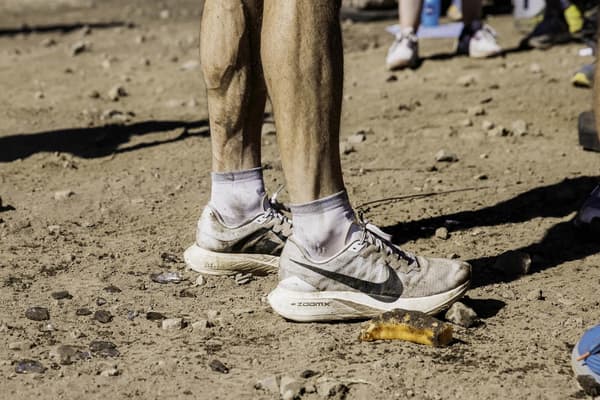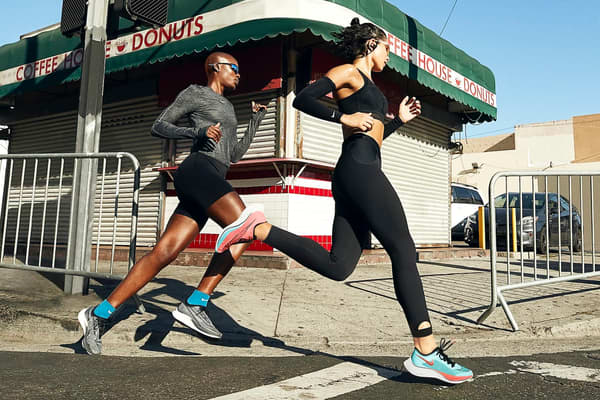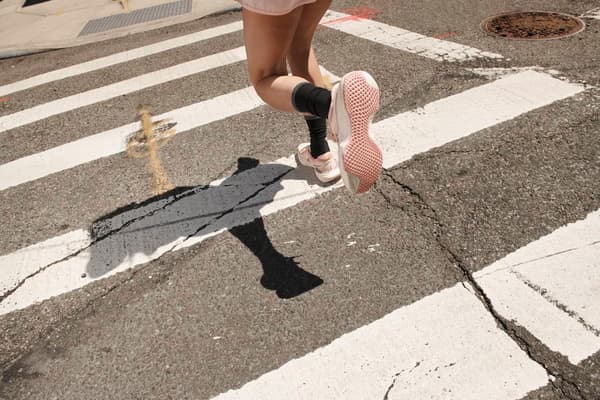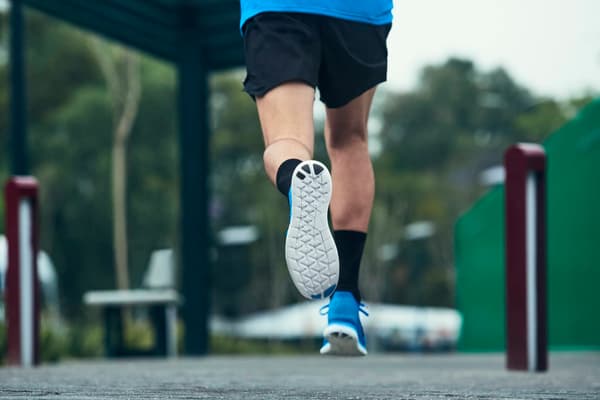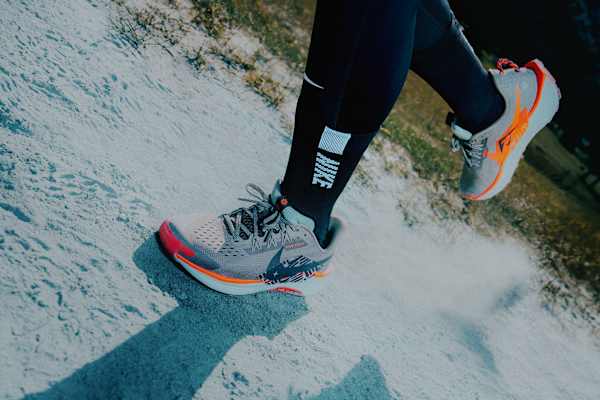What Shoes Are Best for Overpronation?
Buying Guide
If your feet roll inwards when you run, you'll want to invest in supportive shoes for overpronation to give you stability and comfort.
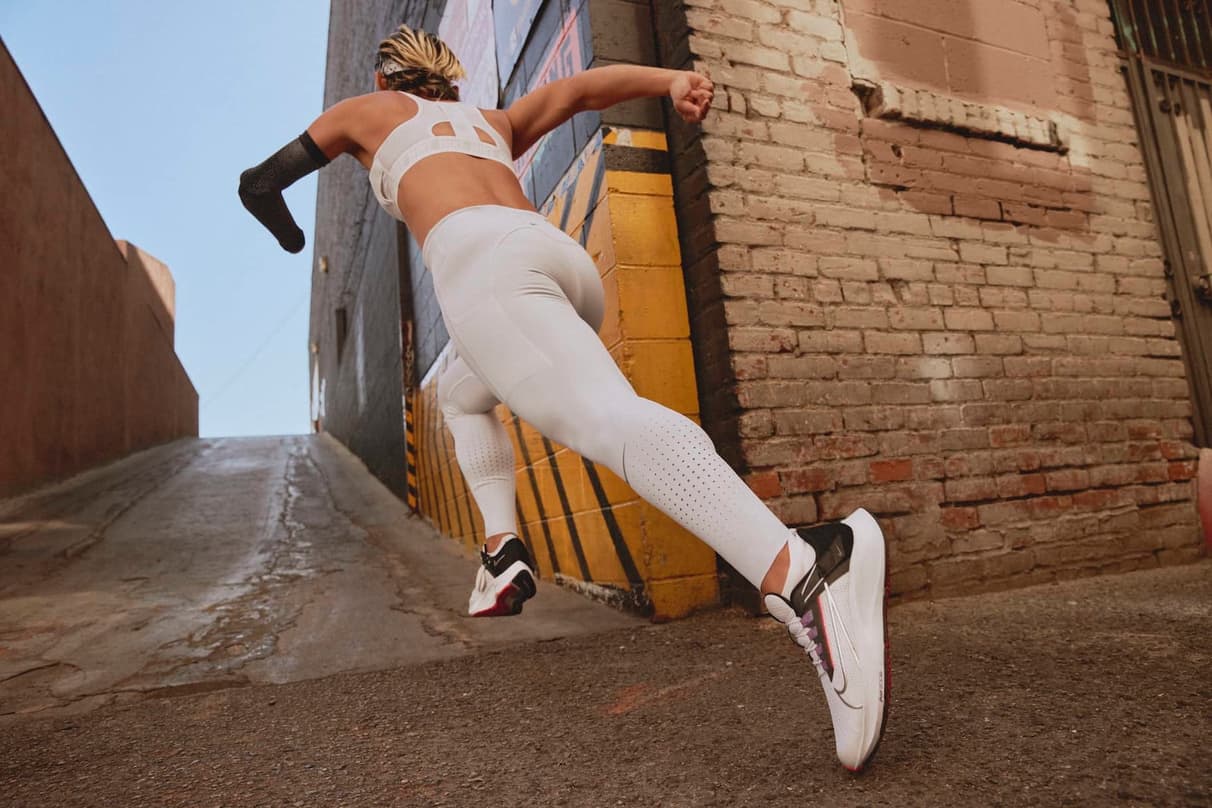
If your feet roll inwards when you walk or run, you may have overpronation, the most common foot strike. In that case, you'll want to invest in supportive running shoes to help keep you moving comfortably.
When you walk or run, ideally, you should land on your midfoot. When the centre of your foot hits the ground, your weight is equally distributed and impact is evenly absorbed. In addition, your foot will roll about 15 percent inwards, naturally flattening the arch of your foot. This maximises shock absorption and keeps your ankles and legs in alignment to prevent injuries. This is known as neutral pronation.
However, it's estimated that the majority of the population overpronates. Rather than the modest 15 percent inward roll upon impact, over-pronators experience excessive rolling of the foot. Upon landing on the outside of the heel, the weight is then transferred to the inner edge of the foot as the arch collapses, placing pressure on the first and second toe during push off between steps.
Here are three of Nike's most popular shoes for runners with overpronation:
How to Find the Best Shoes for Overpronation
Certain shoes are designed with overpronation in mind. They work by counteracting the tendency to excessively roll inwards, offering more cushioning and better arch support.
Stability shoes for overpronation work to stabilise the foot by adding in midsole motion control, known as a medial post. Medial support (firmer material in the midsole) helps keep your feet, ankles and legs in alignment. This allows for a smoother heel-to-toe motion without placing undue pressure on the big toe during push off.
Nike supportive shoes are designed for maximum shock absorption with a wider foreprint for stability and a more curved outsole for easier heel-to-toe transitions. Here's what you want to look for when shopping for the best shoes for overpronation.
Strategic Cushioning
If you overpronate, you need specific cushioning technology. Look for foam that's soft and springy while still providing stability, like Nike React Foam. It absorbs the impact of each stride without dampening the energy return of each stride.
Nike React Foam cushions each step, bouncing back to its original state to ensure a consistent underfoot feel stride after stride, mile after mile. Plus, it's Nike's longest-lasting foam.
Durable Stability
Shoes with too much flexibility will only worsen your foot's natural inclination to roll inwards. It's important that your shoes keep your feet stable.
Nike Zoom Structure running shoes feature a triple-density dynamic support system in the midsole. This system uses opposing wedges of foam with different densities to help slow the rate of pronation. They also have asymmetrical Nike Flywire cables that wrap your foot and provide support without adding bulk.
Firm Arch Support
When your feet roll inward, your arches collapse. You need shoes with a firm midsole to mimic and protect your natural arches—with added support. This helps improve your foot alignment and running efficiency.
Go for shoes that are shaped like a rocker, which allow for a smooth heel-toe transition. They provide support for the three phases of a runner's stride—flexibility when your foot lifts off the ground, a smooth ride when your foot is moving forwards and cushioned arch support at ground contact.
Reinforced Heel Counter
A common feature of stability shoes, reinforced heel counters give maximum support for overpronated feet during a long run. "Heel counter" refers to the padding and lining at the rear of your shoe that reduces slippage and provides enhanced stability with each stride. This is essential for runners who overpronate, as they may experience ankle rolling or pain in less stable shoes.
How to Tell if You Overpronate
The specifics of your gait may not be obvious. But you may struggle with foot pain or knee issues that can be attributed to your foot strike. If you don't know whether you fit into the category of supination, overpronation or something else entirely, here's a quick guide to help you establish whether you have overpronation.
1.Examine Your Stride
Work with a podiatrist or physiotherapist, who will conduct a gait analysis. If you don't have access to a podiatrist, record yourself walking or running. If you notice your feet rolling inwards, it's a sign that your feet overpronate.
Another sign of overpronation from gait analysis is pronation distortion syndrome, also known as knock knees. Excessive pronation of the foot can misalign the knee, causing internal rotation. In severe overpronation, you might be able to see this when looking in the mirror.
2.Take a Look at Your Shoes
Another option is to look at a pair of your favourite running shoes. Is one side more worn out than the other? If your shoes are more worn out on the inner edge (particularly under the big toe), it's an indication that you overpronate. Plus, if you notice your shoes are very worn down, it may be time to replace them.
3.Perform the Wet Test
With wet feet, step onto a surface that allows you to see your footprint (dry concrete, butcher paper, etc.). If you can see a full outline of your foot and arch, it's a sign that your arch is collapsing and you're at risk of overpronation. A neutrally pronated foot should have a light outline of the arch, reflective of flexibility without collapse.
Frequently Asked Questions
How Can You Correct Overpronation?
Wearing proper footwear is an essential part of treatment for overpronation. Wearing running shoes that don't provide sufficient cushioning can worsen overpronation. Opt for shoes that provide secure arch and ankle support to promote correct alignment.
It's also important for over-pronators to replace running shoes when they start to show signs of excessive wear on the inner edge of the shoe. Wearing down the soles only enhances the problem.
Aside from proper footwear, overpronation can also be treated by performing exercises that strengthen the arches of the foot and the surrounding muscles. Here are some of the best ones:
- Outward Roll: stand with feet hip-width apart, then roll your weight slowly to the outside of your feet. Control the movement back inwards. Repeat 10 times.
- Seated Calf Stretch: sitting on the floor, stretch your calves in front of you and reach for your toes, ankles or shins. This will help loosen up tight Achilles tendons caused by overpronation.
- Arch Flex: with your feet flat on the floor, squeeze your big toe, little toe and heel to contract your arch. Hold for 10 seconds and repeat 10 times.
What Are the Best Shoes for Severe Overpronation?
Look for Nike React technology when buying shoes for severe overpronation. The extra cushioning in the inner edge helps to correct stride imbalances to better distribute weight and support the arches.
What Causes Overpronation?
Excessive pronation has been linked to having flat feet. Flat feet can be inherited or caused by excess flexibility of the foot that prevents structural rigidity of the arches. While the arches should flatten upon impact, they should maintain their structure enough to prevent excess inward roll.
What Can Overpronation Lead To?
Many experts attribute injuries like Achilles tendonitis, plantar fasciitis, shin splints, heel or foot pain, or damaged muscles, ligaments and tendons to overpronation. The excessive inward rotation of the foot leads to rotation of the tibia, femur and pelvic girdle.
A January 2007 study in Gait & Posture found that 2 to 3 degrees of foot pronation led to a 50 to 75 percent increase in anterior pelvic tilt while walking. Anterior pelvic tilt is linked to pain in the lower back, hips and legs, as well as gait problems and lower-body injuries.
Is Overpronation Dangerous?
Overpronation can increase your risk of running injury due to the strain of internal rotation in your feet, ankles, knees and pelvis. This can cause pain, imbalances in the lower extremities and lumbar spine. However, it's a very common foot strike and can be asymptomatic.
